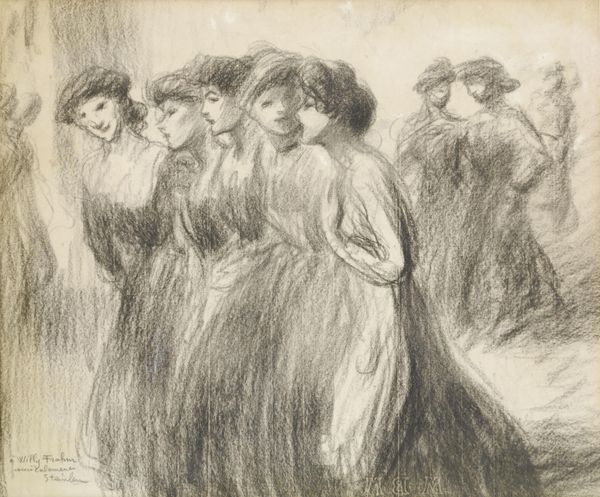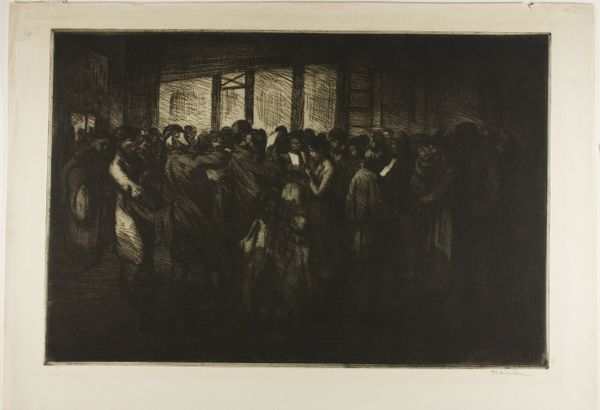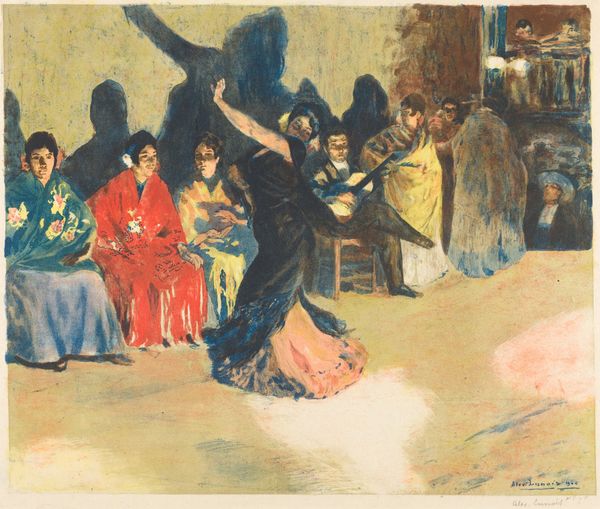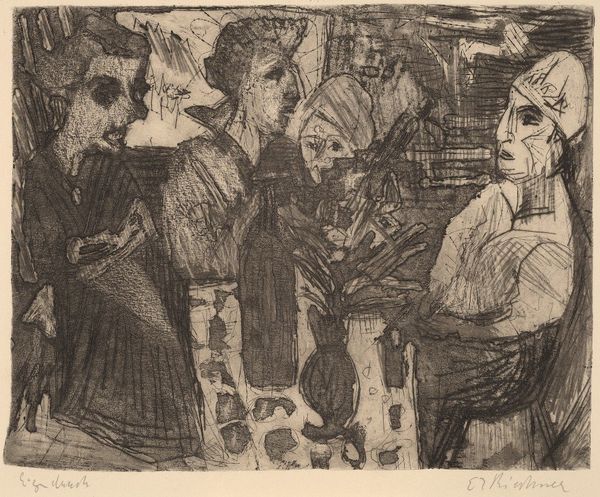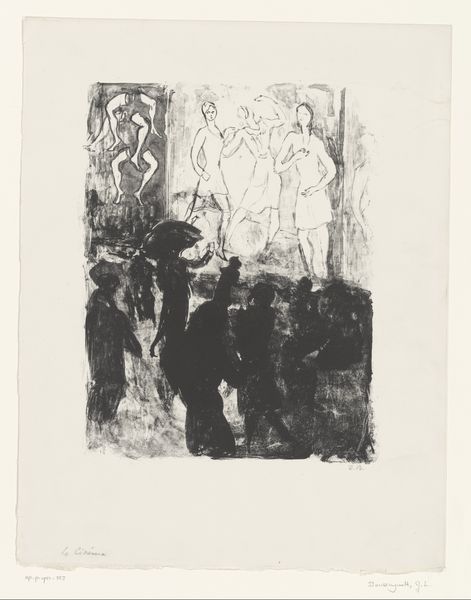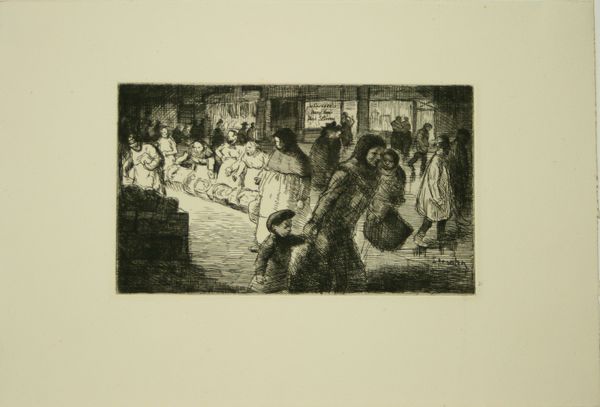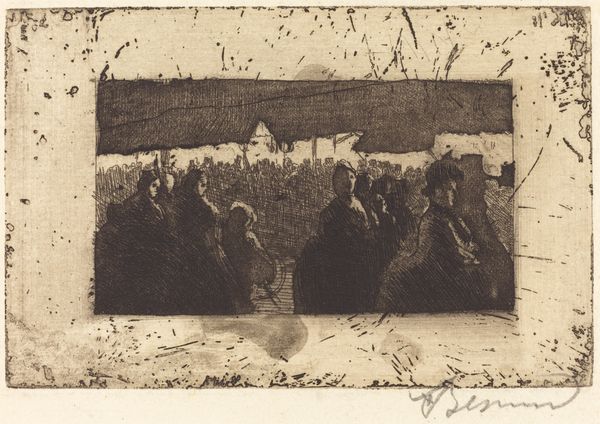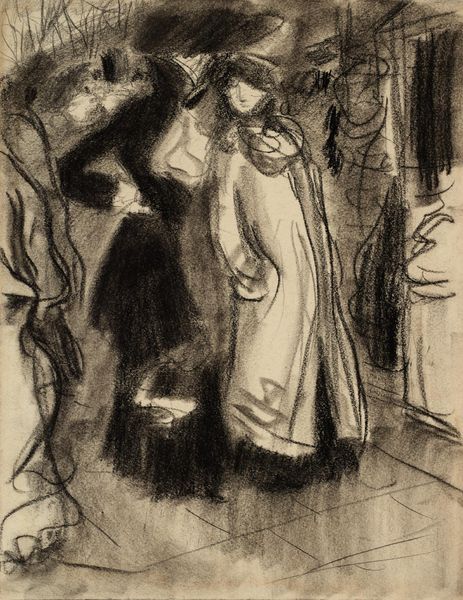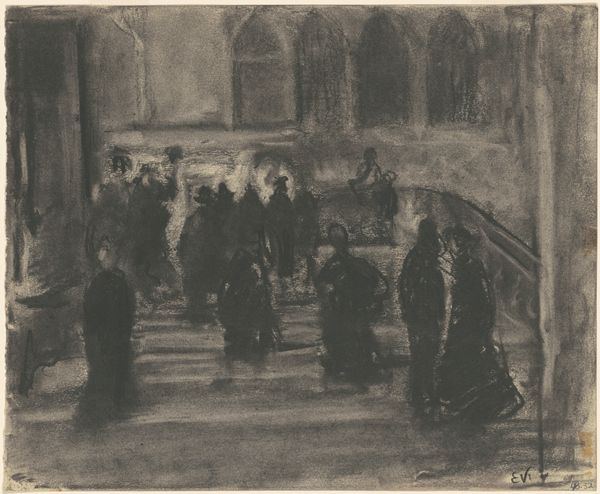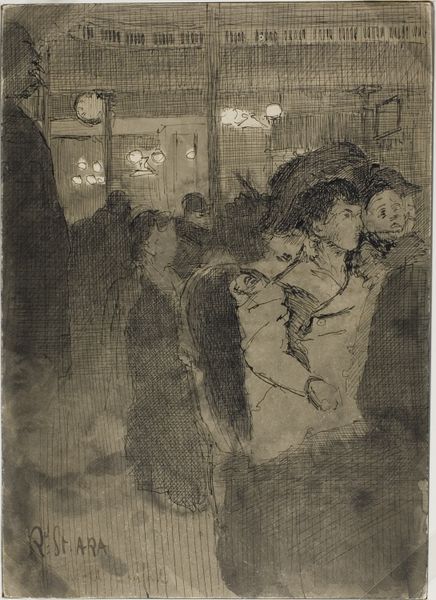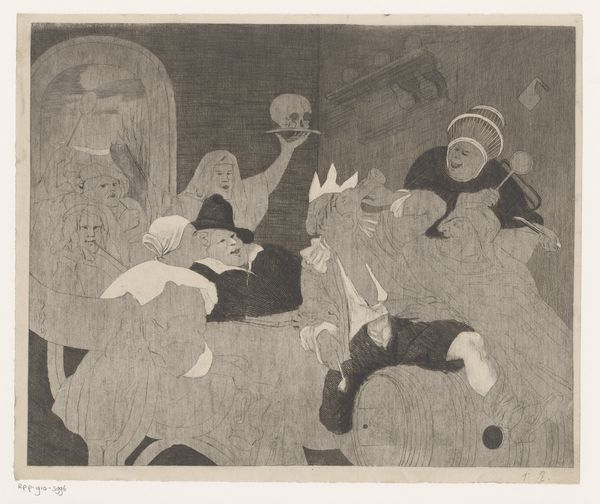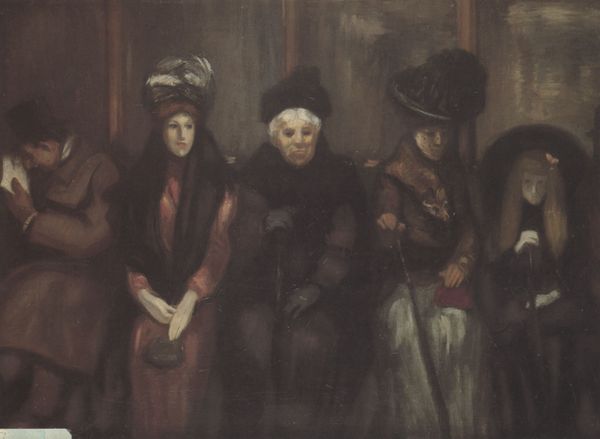
drawing, print
#
portrait
#
drawing
# print
#
impressionism
#
figuration
#
group-portraits
Dimensions: 446 × 543 mm
Copyright: Public Domain
Curator: So, here we have Eugene Carriere's "Women in Landscape," a drawing and print currently residing here at The Art Institute of Chicago. Editor: Well, first impressions...it's ghostly. They emerge from the fog like memories or half-formed ideas. Are they ghosts, do you think? Or maybe a flock of ballerinas practicing on a cloudy day? Curator: Ballerinas are an interesting interpretation. Given Carriere's social circle, and his focus on domesticity, I suspect he might have been more interested in conveying a certain societal gathering amongst women of the period. It reminds us of impressionist sensibilities of modern Parisian life. Editor: Okay, Parisian gatherings. I see your point about it perhaps being an observation of some kind of societal expectations... But still! There's something almost otherworldly in the way he renders their figures, all soft edges and indistinct faces. There seems to be this kind of universal feeling more so than historical capturing, I feel. What I am seeing is so, so deeply internalized, you know? Curator: His approach was part of the Symbolist movement's focus on the internal. And so we might think about these women as figures representing grief, family ties, or societal concerns… Remember Carriere made the choice to utilize primarily muted tones— that choice carries as much weight as the figures portrayed themselves. Editor: Right! And with muted tones— this brownish, monochrome haze blankets the composition, lending a melancholic, yet somewhat distant and detached mood. Did Carriere have an appreciation for melodrama, or, conversely, perhaps apathy for "traditional" depictions of women, given his approach to representing them as shadowy, indistinct figures in such ambiguous settings? Curator: What’s powerful here, regardless, is Carriere's conscious decision to pull away from realism. By not detailing the figures distinctly, or their surroundings, he leaves much room for interpretation for the viewer. This reflects the Symbolist idea of artworks as vehicles for emotion and for deeper human understanding, more so than a reflection of the modern world around us. Editor: It is a powerful technique, certainly. Like seeing the faintest glimmers of self-recognition flicker across these half-formed faces, knowing they will inevitably recede again. Almost heartbreaking, in its own right. Well, regardless, Carriere gave me something to ponder with this evocative print, and to question not just about what I am looking *at*, but how these figures actually made me feel as an observer. Curator: Precisely! Carriere compels us to grapple with larger, often invisible structures. The effect being not just the artist, but the artwork makes a strong statement.
Comments
No comments
Be the first to comment and join the conversation on the ultimate creative platform.

